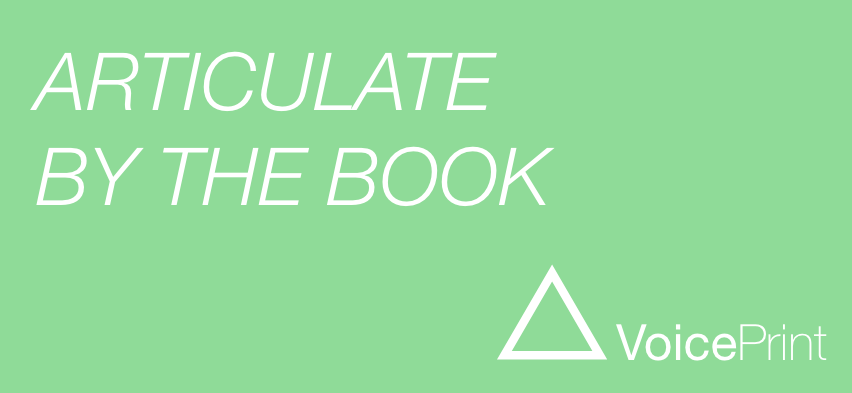Why coaches need a good communications model?
We would all benefit from becoming more talk-wise, more adept and more consistently successful with our communicating, both how effectively we speak and how well we listen. But if there’s one occupation above all that needs to be outstandingly talk-wise, it’s the personal coach. Information technology skills may be the only other sphere of occupational practice that has grown as fast as coaching. It has been estimated that 83% of employers now use coaching as a means of developing their people [1], that 72% of organisations expect to increase their spend on coaching [2] and that there are now more than 53,000 executive coaches worldwide. [3]
Why is it that coaches need to be exemplary in their understanding, personal practice and guidance of others, when it comes to the competent use of talk? There are at least five reasons.
- For a start, coaching is a conversation. That’s where coaching happens. So the coach needs to be knowledgeable, skilful and timely in managing the conversational process, facilitating it in a way that makes this relatively expensive form of personal development correspondingly highly productive. This requires range on the coach’s part, not just because she or he will encounter many different types of coachee, but also because there are various different types of coaching. While posing questions and inviting coachees to think things through for themselves is the primary strategy in executive coaching, other forms of performance coaching, such as the development of sporting technique, can be based on very different strategies, ranging from close observation, interruptive challenge and directive feedback to empathic listening and gentle suggesting. Coaches do not simply have one type of conversation, so they need a comprehensive model and grasp of the different forms that conversations can take.
- The second reason is that the coach has to get inside the coachee’s mind and understand how it works. Coaching expert James Flaherty [4] made the observation over 20 years ago that at the start of any coaching assignment the coach is always running to catch up. The coachee is already in the thick of the action, in the middle of his or her story, working to get something done and generally doing what they believe to be their best to achieve it. Coaches need to bring themselves ‘up to speed’ with the coachee’s role, situation, back story and, crucially, how they are thinking and acting on the problems and challenges that they are facing. One of the coach’s key tasks is to surface the coachee’s thinking and approach, bring unspoken assumptions and tacit strategies to light, and hold them up explicitly so that the coachee has an opportunity to re-examine them in new and fresh ways. The coachee needs help to recognise more of the implications of what they are doing. Coaches therefore need models to map the different approaches that their coachees might be taking and the alternative approaches that they might consider.
- This brings us to the third and pivotal reason why coaches need to be outstandingly talk-wise: talk is what we human beings use to get things done. It is our primary form of action. Whether a person is being coached or not, s/he is using talk to get to grips with whatever they are endeavouring to do. We use talk to conduct our interactions, discussions and negotiations with others. We use it in our own thinking, to reflect on issues and think things through. We use self-talk to monitor and manage ourselves, our relationships and our performance. Talk is quite simply central to how we operate. The problem is that we talk largely sub-consciously, or at a less than fully conscious level, and also highly idiosyncratically. The ways in which we use talk to make things happen are very individualised and unexpectedly diverse. That is why communicating is so problematic, why there are so many misunderstandings, why people so often find themselves talking at crossed purposes without quite realising that they are, or understanding why things aren’t working as well as they had expected. Coaches need a good model of how talk works, of how it constitutes the fundamental set of resources that people draw on to get things done. A talk-wise coach can help coachees to develop the awareness, skill, range and flexibility to get the most out of these resources. In this way a talk-wise coach not only improves a coachee’s performance in relation to the immediate objectives of the coaching but also in terms of their capability to tackle other, as yet unspecified issues in the future.
- The reason why it is so useful to bring the pattern of how an individual uses talk into that person’s conscious awareness is that talk always has impact. Without awareness, that impact may be unproductive, unrecognised and uncorrected. The irony is that the actions that produce these impacts are generally the result of good intentions. But good intentions often miscarry in a world where people use talk so variously. This is why the exploration of the gap or mismatch between intention and impact is such a common feature in coaching work. The VoicePrint model, which is the conceptual basis for talk-wise coaching, identifies nine different ‘voices’ that constitute the competent use of talk and also the nine dysfunctional impacts that these can have when they are used poorly: excessively, unskilfully, or without sensitivity to timing or effect. Thus, for example, the Diagnose voice can become over-analysis, the Advise voice can become patronising and the Evaluate voice can become criticism. The coach who grasps and can enact all the voices can not only bring the intention-impact issue vividly to life, but can also sharpen the coachee’s awareness, sensitivity and skill in a particularly immediate, powerful and practical way. The talk-wise coach creates the talk-wise coachee.
- The final reason why a coach needs to be talk-wise is that coaches are individuals too. They too have distinctive voiceprints. Each coach has a tendency to use the available repertoire of voices in a distinct and idiosyncratic way. They may have learned some techniques, especially perhaps to help them with the business of contracting, questioning, listening and reflecting back, but they will still have their own characteristic ways of using talk, in their inner conversation, if not in what they say aloud. They will also, as every individual does, have their own sensitivities. There will be a voice or voices which they have a tendency to hear somewhat negatively, while there may be others that they tend to hear particularly positively. They might, for example, be disinclined to use the Evaluate voice themselves because they find it ‘too critical’ and then get a negative feeling about a coachee who uses it a lot. Or they might be attracted to the Articulate voice because they hear it as evidence of thoughtfulness, while overlooking the risk of it becoming verbosity. Whether negatively or positively disposed towards particular voices, these personal predispositions can skew or bias a coach’s attitude towards a coachee. That’s why the coach needs to understand and remain alert to her or his own VoicePrint profile. That why s/he needs to be exemplary in replacing reflex reactions with thoughtful, talk-wise responses.
To be a talk-wise coach is to be one who is exceptional, accomplished and unforgettable.
Want to use VoicePrint to become TalkWise in your own coaching practice? Discover the options for VoicePrint accreditation.
Alan Robertson
Notes:
1 from research by Henley School of Management, 2014
2 from the Ridler Report on key trends in executive coaching, 2017
3 from research by the International Coach Federation in conjunction with the consultants Price Waterhouse Cooper, 2016
4 from Coaching: evoking excellence in others, by James Flaherty, published by Butterworth-Heinemann, 1999
Ready for a conversation?


